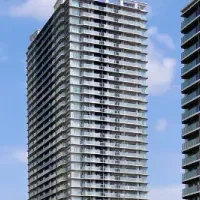
Global Green Building Materials Market Expected to Surpass $791.8 Billion by 2032 Due to Sustainability Trends
Global Green Building Materials Market Overview
Introduction
The global green building materials market is on a remarkable trajectory, with projections indicating a significant growth to approximately $791.8 billion by 2032. Led by energy efficiency demands and a rising focus on environmental sustainability, this sector is poised for robust advancement in the coming years. According to a recent report from Meticulous Research®, the market is expected to experience a Compound Annual Growth Rate (CAGR) of 9.9% from 2025 to 2032.
Market Segmentation
The market is multifaceted, categorized by type, product, application, and sector. Notably, it is anticipated that recycled materials will hold over 54% of the market share due to their inherent benefits in waste reduction and resource conservation.
By Type
- - Recycled Materials: Dominate with more than half of the market share.
- - Natural Materials: Gaining traction as sustainable practices become prevalent.
- - Bio-based Alternatives: These materials are showing strong potential for future growth.
Government policies are increasingly encouraging the use of recycled materials, boosting their adoption across various projects.
By Product
- - Exterior Products: Account for over 43% of the market, driven by their contribution to enhancing energy efficiency and air quality.
- - Interior Products: These are experiencing rapid growth, focusing on promoting healthy indoor environments and sustainable living.
- - Solar Products: The demand is increasing with the rise of building-integrated photovoltaic (BIPV) systems.
- - Smart Windows: Innovations in this category are contributing to sustainability.
By Application
- - Roofing: Dominates with over 40% market share, emphasizing options like cool roofs, green roofs, and BIPV systems.
- - Insulation: Remarkable growth is seen due to advanced energy-efficient solutions.
- - Flooring and Siding: Expanding as sustainable materials are adopted.
- - Framing: Benefitting from the advancement of high-performance sustainable composites.
By Sector
- - Residential Sector: Holds over 42% share, spurred by tax incentives and the trend towards sustainable living.
- - Commercial Sector: This area is also growing quickly, driven by corporate sustainability initiatives.
- - Green Certifications: They are enhancing demand across all sectors, reinforcing the push for sustainable practices.
Regional Insights
North America leads the market with over 35% share, bolstered by stringent environmental regulations and leading industry players. The Asia-Pacific region is expected to grow the fastest, at 11.0% CAGR, fueled by increasing demands for sustainable construction. Meanwhile, Europe remains steadfast with strong market presence due to rigorous environmental standards.
Emerging markets in Latin America and the Middle East & Africa are also beginning to show promising trends in the adoption of green building materials.
Key Drivers of Market Growth
- - Energy-efficient Buildings: The demand for them is escalating alongside advanced insulation solutions.
- - Adoption of Green Materials: Increasing across both residential and commercial sectors.
- - Government Policies: Favorable regulations, including LEED certification incentives, promote sustainable construction.
- - Environmental Awareness: Growing concerns regarding carbon footprints are influencing market trends.
- - Technological Innovations: In sustainable materials, combined with smart building integrations, are propelling market advancement.
Emerging Opportunities
The development of innovative bio-based and recycled building materials is shaping future prospects. Furthermore, advancements in smart building technologies, integration of renewable energy systems, and adherence to net-zero energy principles are also emerging as significant trends.
Challenges Facing the Market
Despite the promising outlook, several challenges exist:
- - High Initial Costs: Green building materials typically represent a greater upfront investment compared to traditional options.
- - Limited Awareness: There is a lack of understanding among small-scale residential owners regarding sustainability advantages.
- - Regulatory Variability: Differences in regional regulations and certification standards complicate market uniformity.
- - Supply Chain Complexities: Managing sustainable raw material procurement globally presents logistical hurdles.
Conclusion
The green building materials market symbolizes a transformative change within the construction industry, leaning towards sustainability and efficiency. As highlighted by Mr. Uddhav Sable, Research Director at Meticulous Research®, government incentives and certifications play a pivotal role in catalyzing growth and adoption, particularly within the residential market.
For a detailed analysis and further insights, access the complete report from Meticulous Research®, offering a comprehensive overview of market trends, growth predictions, and future opportunities in sustainable construction.
Download the Full Report
Topics Environment)










【About Using Articles】
You can freely use the title and article content by linking to the page where the article is posted.
※ Images cannot be used.
【About Links】
Links are free to use.